Phosphorylation of AGO2 by TBK1 Promotes the Formation of Oncogenic miRISC in NSCLC
- PMID: 38351659
- PMCID: PMC11022703
- DOI: 10.1002/advs.202305541
Phosphorylation of AGO2 by TBK1 Promotes the Formation of Oncogenic miRISC in NSCLC
Abstract
Non-small-cell lung cancer (NSCLC) is a highly lethal tumor that often develops resistance to targeted therapy. It is shown that Tank-binding kinase 1 (TBK1) phosphorylates AGO2 at S417 (pS417-AGO2), which promotes NSCLC progression by increasing the formation of microRNA-induced silencing complex (miRISC). High levels of pS417-AGO2 in clinical NSCLC specimens are positively associated with poor prognosis. Interestingly, the treatment with EGFR inhibitor Gefitinib can significantly induce pS417-AGO2, thereby increasing the formation and activity of oncogenic miRISC, which may contribute to NSCLC resistance to Gefitinib. Based on these, two therapeutic strategies is developed. One is jointly to antagonize multiple oncogenic miRNAs highly expressed in NSCLC and use TBK1 inhibitor Amlexanox reducing the formation of oncogenic miRISC. Another approach is to combine Gefitinib with Amlexanox to inhibit the progression of Gefitinib-resistant NSCLC. This findings reveal a novel mechanism of oncogenic miRISC regulation by TBK1-mediated pS417-AGO2 and suggest potential therapeutic approaches for NSCLC.
Keywords: AGO2; Gefitinib; TBK1; miRISC; non‐small‐cell lung cancer (NSCLC).
© 2024 The Authors. Advanced Science published by Wiley‐VCH GmbH.
Conflict of interest statement
The authors declare no conflict of interest.
Figures

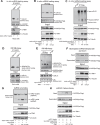
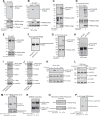
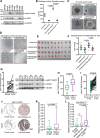
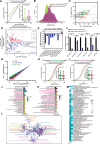

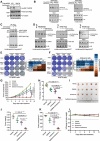

Similar articles
-
MiR-133a-3p attenuates resistance of non-small cell lung cancer cells to gefitinib by targeting SPAG5.J Clin Lab Anal. 2021 Jul;35(7):e23853. doi: 10.1002/jcla.23853. Epub 2021 May 31. J Clin Lab Anal. 2021. PMID: 34057242 Free PMC article.
-
miR-762 activation confers acquired resistance to gefitinib in non-small cell lung cancer.BMC Cancer. 2019 Dec 10;19(1):1203. doi: 10.1186/s12885-019-6416-4. BMC Cancer. 2019. PMID: 31823748 Free PMC article.
-
TRIP13 overexpression promotes gefitinib resistance in non‑small cell lung cancer via regulating autophagy and phosphorylation of the EGFR signaling pathway.Oncol Rep. 2023 May;49(5):84. doi: 10.3892/or.2023.8521. Epub 2023 Mar 10. Oncol Rep. 2023. PMID: 36896765 Free PMC article.
-
Implications of MicroRNAs in the Treatment of Gefitinib-Resistant Non-Small Cell Lung Cancer.Int J Mol Sci. 2016 Feb 15;17(2):237. doi: 10.3390/ijms17020237. Int J Mol Sci. 2016. PMID: 26891293 Free PMC article. Review.
-
Clinical utility of erlotinib for the treatment of non-small-cell lung cancer in Japanese patients: current evidence.Drug Des Devel Ther. 2014 Jul 31;8:1037-46. doi: 10.2147/DDDT.S50358. eCollection 2014. Drug Des Devel Ther. 2014. PMID: 25114510 Free PMC article. Review.
Cited by
-
STAT3-specific nanocarrier for shRNA/drug dual delivery and tumor synergistic therapy.Bioact Mater. 2024 Jul 17;41:137-157. doi: 10.1016/j.bioactmat.2024.07.010. eCollection 2024 Nov. Bioact Mater. 2024. PMID: 39131627 Free PMC article.
-
Phosphorylation of syntenin-1 by TBK1 promotes proliferation and migration of non-small cell lung cancer cells.J Biol Chem. 2025 Jul;301(7):110278. doi: 10.1016/j.jbc.2025.110278. Epub 2025 May 22. J Biol Chem. 2025. PMID: 40412527 Free PMC article.
-
TBK1 is paradoxical in tumor development: a focus on the pathway mediating IFN-I expression.Front Immunol. 2024 Aug 5;15:1433321. doi: 10.3389/fimmu.2024.1433321. eCollection 2024. Front Immunol. 2024. PMID: 39161768 Free PMC article. Review.
-
Targeting TBK1 potentiates oncolytic virotherapy via amplifying ICAM1-mediated NK cell immunity in chemo-resistant colorectal cancer.J Immunother Cancer. 2025 Jun 8;13(6):e011455. doi: 10.1136/jitc-2024-011455. J Immunother Cancer. 2025. PMID: 40484646 Free PMC article.
References
MeSH terms
Substances
Grants and funding
LinkOut - more resources
Full Text Sources
Other Literature Sources
Medical
Molecular Biology Databases
Research Materials
Miscellaneous
